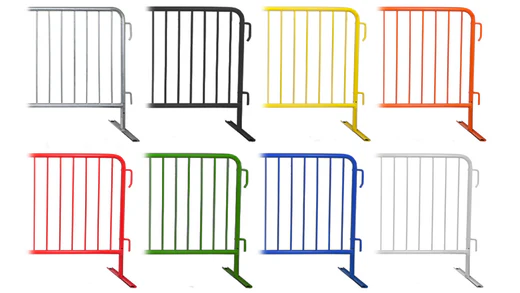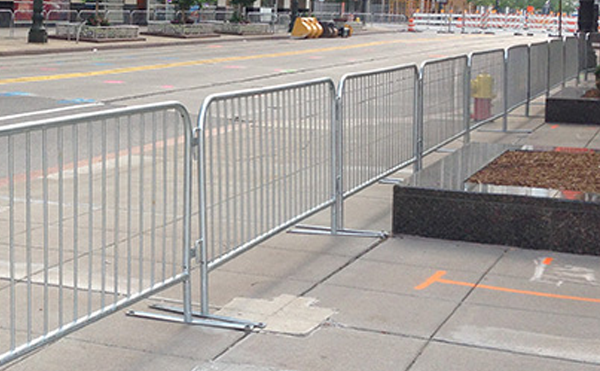Utilizing Colored Barricades to Enhance Crowd Control
Steel barricades are an essential tool for crowd control and queue management. They are sturdy, durable, and can be used in a variety of settings, from festivals and concerts to construction sites and public events. However, not all steel barricades are the same. In this blog post, we will explore how utilizing colored barricades can affect the queue and enhance crowd control efforts.
Standard stanchions are typically 40” tall and are designed for guiding pedestrians in high-traffic areas, such as airports and train stations, where the crowds are large and move quickly. But in settings such as museums and car shows where the requirement is to keep visitors at a distance from displays a shorter 24”: high stanchion is more appropriate. Let’s take a closer look at why.
The Psychology of Color
Before we dive into the impact of color on crowd control, it’s important to understand the psychology of color. Colors have a profound effect on our emotions, moods, and behavior. Different colors can evoke different emotions and reactions, making them a powerful tool in marketing, branding, and design.
For example, red is associated with passion, energy, and excitement, while blue is calming, trustworthy, and professional. Yellow is cheerful and optimistic, while green is natural and calming. Understanding the psychology of color is essential when choosing a steel barricade color for your event or space.
Color and Crowd Control
When it comes to crowd control and queue management, color can play a significant role in the effectiveness of your barricades. A well-placed and well-designed barricade can help guide crowds and prevent chaos, but the color of the barricade can enhance or detract from this effect. Here are a few ways that the color of your steel barricade can affect crowd control:
Visibility
The primary purpose of a barricade is to be seen and serve as a physical barrier. Choosing a color that contrasts with the surroundings can help increase visibility and prevent collisions or accidents. For example, if your event is in a park with lots of greenery, a bright yellow or orange steel barricade can help it stand out and prevent people from accidentally walking into it.
Mood
As mentioned earlier, different colors can evoke different emotions and moods. If you want to create a sense of calm or relaxation in your event or space, you may want to opt for blue or green steel barricades. On the other hand, if you want to create excitement or energy, red or yellow barricades may be more appropriate.
Branding
If you are using steel barricades for your business or organization, you may want to consider using colors that align with your brand. This can help reinforce brand recognition and make your barricades feel more cohesive and intentional.
Directional cues
Steel barricades can be used to guide people through a space or event. Choosing different colors for different areas or sections can help provide directional cues and make it easier for people to navigate.
Best Colors for Steel Barricades
So, what are the best colors for steel barricades? The answer will depend on the specific event or space you are using them for, as well as your goals and objectives. Here are a few general guidelines:
High visibility colors: If safety is a top priority, you may want to choose a high visibility color like bright yellow, orange, or red. These colors will stand out in any environment and help prevent accidents or collisions.
Cohesive colors: If you are using steel barricades as part of a larger event or brand, you may want to choose colors that align with your brand or theme. This can help create a cohesive and intentional feel to the event or space.
Calming colors: If you want to create a sense of calm or relaxation, blue or green steel barricades may be the best choice. These colors are associated with relaxation and nature and can help create a soothing environment.
Directional colors: If you are using steel barricades to guide people through a space, you may want to consider using different colors for different areas or sections. This can provide directional cues and make it easier for people to navigate.

